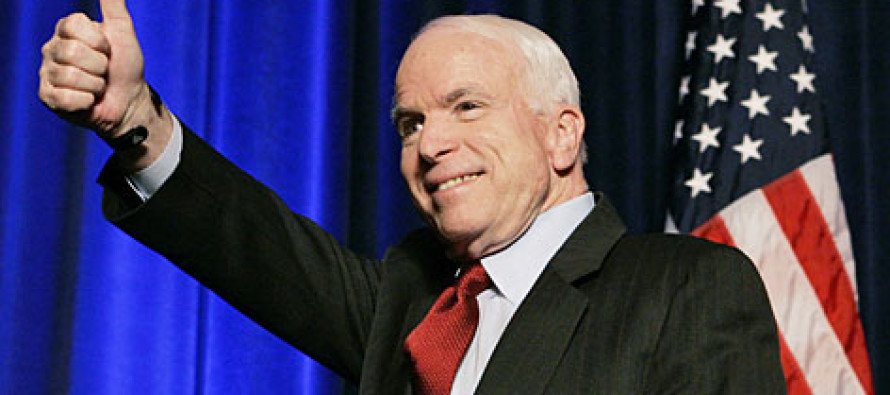McCain Visit to Bangladesh

Three senior US senators, including defeated presidential candidate John McCain (72), paid a visit to Bangladesh on December 2nd for 11 hours before he left for Bhutan. He came from New Delhi to Dhaka.
Some say his visit to New Delhi and Bhutan was a strategy to make it appear a South Asian tour.
Who are the US Senators?
McCain was elected to the US Senate to represent Arizona in 1986 and was the Republican nominee for US presidency in 2008.
Senator Joseph Lieberman has represented Connecticut in the Senate since 1988. He was the Democratic nominee for vice president in 2000. He supported McCain in his bid for presidency and not Obama and irked Democrat Senators.
Senator Lindsey Graham has been US Senator for South Carolina since 2002.
All three senators are members of the Senate Armed Services Committee, with McCain serving as the ranking member.
Follow up of Mumbai attacks:
One of the world’s most troubled regions is South Asia. India and Pakistan fought three wars- 1948, 1965 and 1971. India and China fought a brief war in 1962 and armies of both countries face contested borders.
During his tour in South Asia in March 2000, President Clinton sought to encourage friendship between India and Pakistan, which have newly acquired nuclear weapons and missiles. He called South Asia as the “world’s most dangerous place”.
The Durand Line is recognized as the Pakistan-Afghan border. Successive Afghan rulers, however repudiated the Durrand Line Even Hamid Karzai, Afghanistan’s current president, has called the Durand Line a “line of hate”, because by cutting through tribal lands it artificially divides the Pashtun people, whom Kabul would like to claim as Afghans.
The Durand Line was always a hot spot — and perhaps never more so than in the 1980s, when the United States and Pakistan recruited ‘jihadis’ from all over the world to fight the Soviets, then occupying Afghanistan.
The U.S.-backed Karzai government in Kabul has a tenuous hold on power. The insurgency has spread in many parts of the country, indeed to Kabul itself. The military situation for the U.S. and NATO is worse today than it has been since 2001.
America encouraged influence of India in Afghanistan.. Pakistan’s perennial fear is of being squeezed between India on one flank and an Indian-dominated Afghanistan on the other. This has resulted in frequent violence in Afghanistan by Islamic militants from Pakistan’s tribal areas.
Why the visit?
After the Mumbai attacks, President-elect Barack Obama said on 1st December “The situation in South Asia, as a whole, and the safe havens for terrorists that have been established there represent the single most important threat against the American people.”
The attack on Mumbai and the tensions between India and Pakistan may derail the President-elect’s plan for a regional approach to stabilising Afghanistan, one of his priorities.
The US Secretary of State landed in India while three Senators came to Bangladesh.
Bangladesh , a Muslim majority country (88% are Muslims), in the last decade, saw ugly rise of Islamic militants on its soil and was a victim of terrorist attacks.
Alex Parry in 2002 in Time magazine wrote: “ Bangladesh also has its fundamentalists. And its southern coastal hills and northern borders with India are lawless and bristling with Islamic militants.”
In August 2004, a grenade attack was launched on the former Prime Minister Sheikh Hasina. In August 2005, more than 300 explosions took place simultaneously in 50 cities and towns across the country including the capital Dhaka.
Although Dhaka took stern action against the leaders of outlawed organization by hanging them in March 2007 for terrorist attacks, terrorist cells had not been routed out and recent attacks on sculptures in Dhaka are worrying manifestations of militant Islam.
Fareed Zakaria in his column (DS/2nd December) stated that “the problems of India, Pakistan, Afghanistan and Bangladesh are now bleeding into one another and any purely national approach is not going to work.”
Security experts believe that extremists groups are still operating in Bangladesh. Some of them are Harakat ul-Jihad-I-Islami (HUJI), Hizb ut Tahrir, and the Jihad Movement in Bangladesh (JMB) who was a signatory to the 1998 Al Qaeda declaration of war.
The US Senators are aware of the presence of extremist Islamic groups in the country. Although McCain’s visit to Bangladesh has been billed as pre-election visit, observers say the main purpose appears to find out how Bangladesh fits into US strategy to counter-terrorism in the region..
The Senators who are members of the Senate Armed Services Committee might have sought response how Bangladesh could receive US assistance in its effort to prevent terrorism.
The Senators wanted to get a clear picture from Bangladesh political leaders who are contesting elections on December 29 how the elected government would devise strategies to fight terrorism, in particular after the Mumbai deadly attacks.
They must have stressed on our political leaders that genuine participatory democracy, an active secular civil society and free media are able to fight terrorism in the region.
By Barrister Harun ur Rashid
Former Bangladesh Ambassador to the UN, Geneva.


